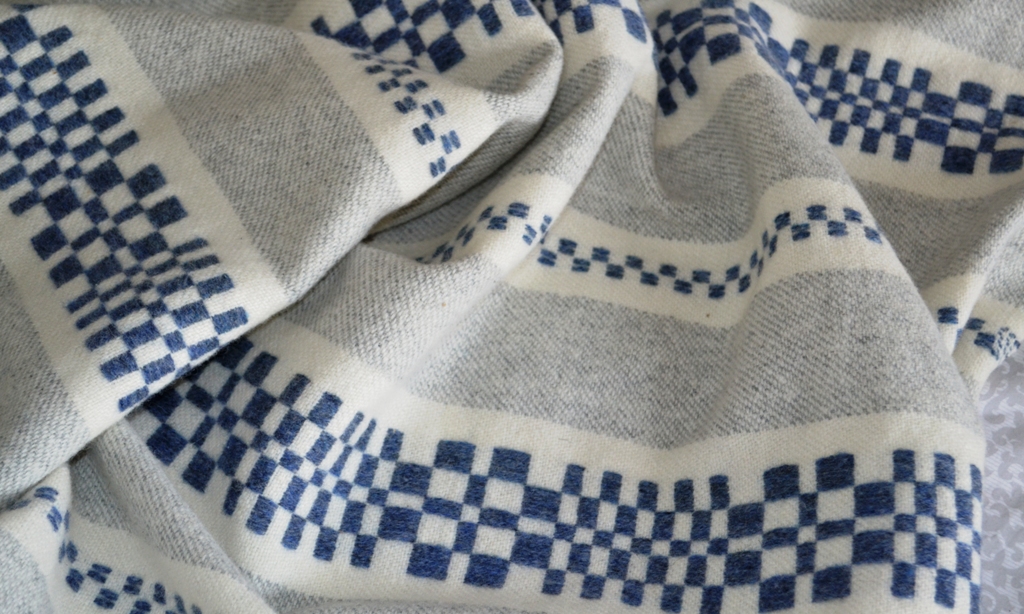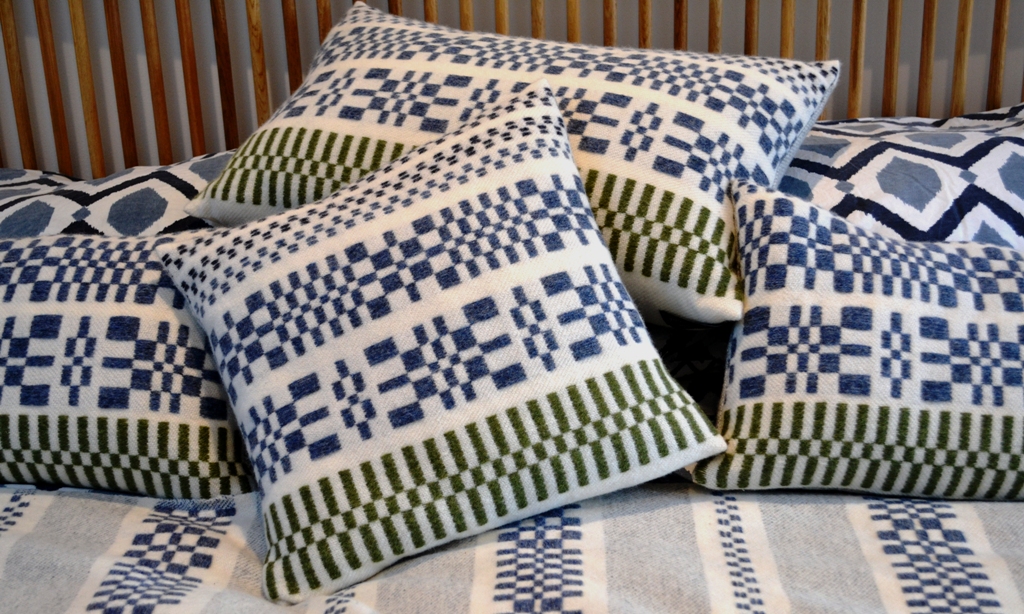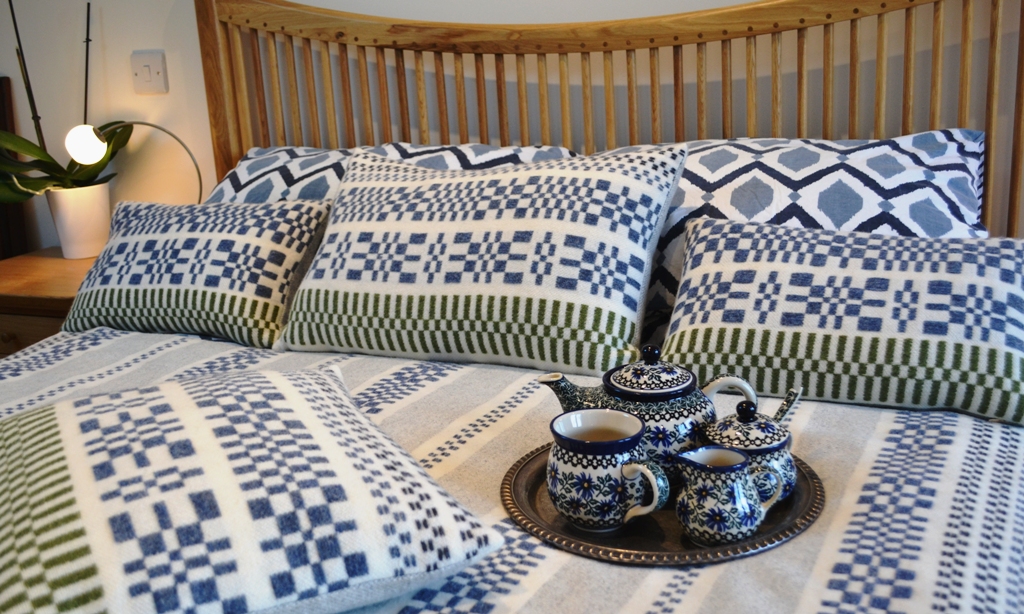‘Monksbelt’
Monksbelt or munkabälte is one of the oldest of patterned European textiles and is thought to have originated in Malmöhus County in Sweden – now part of Skåne in the very southernmost tip of Sweden. Whether you can say it is a Swedish textile or not is debatable though, Malmöhus County having for many centuries formed part of Denmark.
One of the things I love about this textile is that despite it being unchanged for many centuries, it looks like a piece of modernist textile in its bold and graphic patterning.
For my Monksbelt throw and cushions I have reworked the technique to be woven on a 3 end twill weave base rather than plain weave which is how the textile was customarily woven. I have done this in order to be able to push my ‘one warp’ project even further and develop some new patterns using a secondary (pattern), coloured weft on a plain white base. It does also mean that you get a more draping cloth because twill always gives a beautifully fluid cloth compared to the more rigid and unyielding plain weave.

Close up detail of the Monksbelt throw
I have used that most iconic of monksbelt motifs, the flower or cross, depending which face of the cloth you look at. The pattern is made of floating threads that are woven alternately with the ground twill cloth so this is another very slow cloth as it requires two shuttles to weave it. One of htese shuttles carries the ground cloth thread, in this case the white wool yarn, the other shuttle carries the pattern thread which can be any contrasting colour.
The cloth builds very slowly… the foot treadle is pressed and the shafts are parted to form the shed for one of the three lines of twill and the first ground cloth shuttle is thrown across, the foot treadle is released and the thread is beaten in to the fell of the cloth… the shuttle is removed… now the foot treadle is depressed again and this time a different shed is formed, parting the shafts that will form the pattern, and the shuttle containing the pattern weft is entered and thrown across the warp threads… the weft thread is beaten into the fell of the cloth and the whole is repeated but with the next line of the twill weave… and so on.

Handwoven lambswool monksbelt cushions and throw
But there is another reason way this cloth is so slow to weave, apart from the concentration required and the constant stopping and starting as you change shuttles, and this is because the floating thread really does float across what is otherwise a fully integral piece of cloth. To put this another way… if you were to cut and pull out all the pattern threads you would have a white twill throw or cushion (in this case). It would be just the same length and quite unchanged because the pattern threads only intersect in the cloth where they dive through it to the other side. So in fact you are doing twice as much weaving for the same amount of cloth and where you have these bands of pattern it is twice as thick.




